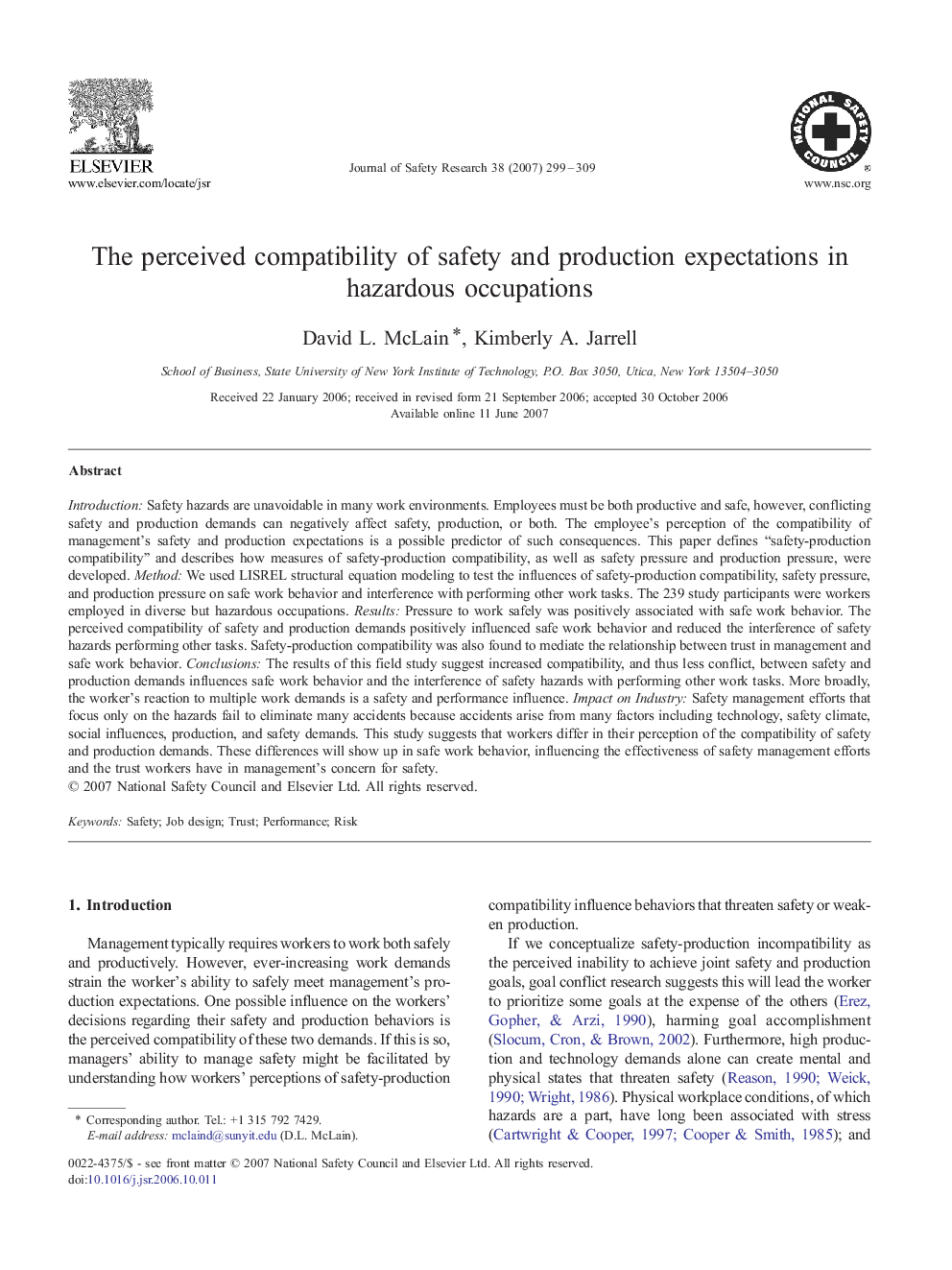| کد مقاله | کد نشریه | سال انتشار | مقاله انگلیسی | نسخه تمام متن |
|---|---|---|---|---|
| 587960 | 878450 | 2007 | 11 صفحه PDF | دانلود رایگان |

IntroductionSafety hazards are unavoidable in many work environments. Employees must be both productive and safe, however, conflicting safety and production demands can negatively affect safety, production, or both. The employee's perception of the compatibility of management's safety and production expectations is a possible predictor of such consequences. This paper defines “safety-production compatibility” and describes how measures of safety-production compatibility, as well as safety pressure and production pressure, were developed.MethodWe used LISREL structural equation modeling to test the influences of safety-production compatibility, safety pressure, and production pressure on safe work behavior and interference with performing other work tasks. The 239 study participants were workers employed in diverse but hazardous occupations.ResultsPressure to work safely was positively associated with safe work behavior. The perceived compatibility of safety and production demands positively influenced safe work behavior and reduced the interference of safety hazards performing other tasks. Safety-production compatibility was also found to mediate the relationship between trust in management and safe work behavior.ConclusionsThe results of this field study suggest increased compatibility, and thus less conflict, between safety and production demands influences safe work behavior and the interference of safety hazards with performing other work tasks. More broadly, the worker's reaction to multiple work demands is a safety and performance influence.Impact on IndustrySafety management efforts that focus only on the hazards fail to eliminate many accidents because accidents arise from many factors including technology, safety climate, social influences, production, and safety demands. This study suggests that workers differ in their perception of the compatibility of safety and production demands. These differences will show up in safe work behavior, influencing the effectiveness of safety management efforts and the trust workers have in management's concern for safety.
Journal: Journal of Safety Research - Volume 38, Issue 3, 2007, Pages 299–309